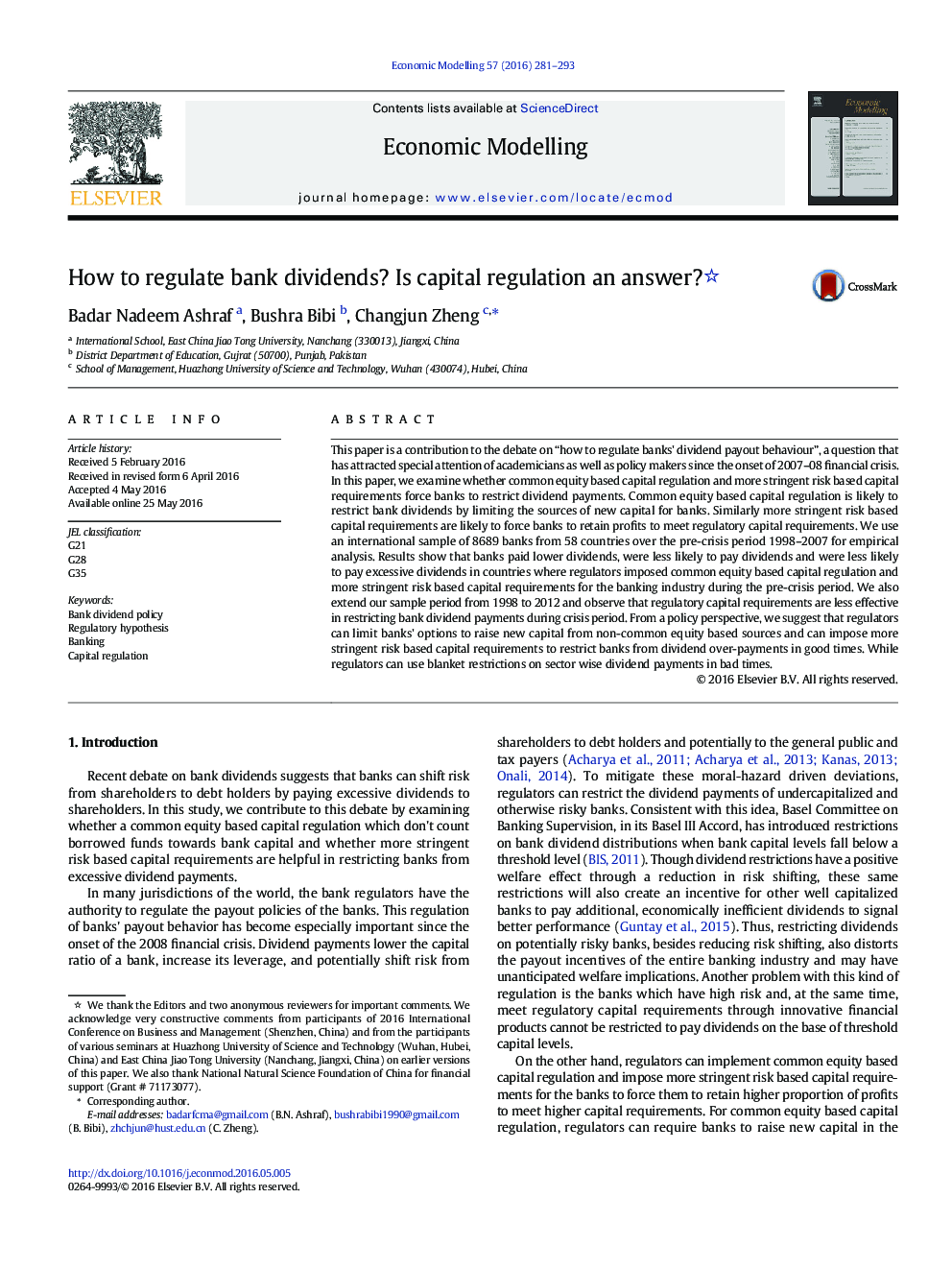| Article ID | Journal | Published Year | Pages | File Type |
|---|---|---|---|---|
| 5053363 | Economic Modelling | 2016 | 13 Pages |
Abstract
This paper is a contribution to the debate on “how to regulate banks' dividend payout behaviour”, a question that has attracted special attention of academicians as well as policy makers since the onset of 2007-08 financial crisis. In this paper, we examine whether common equity based capital regulation and more stringent risk based capital requirements force banks to restrict dividend payments. Common equity based capital regulation is likely to restrict bank dividends by limiting the sources of new capital for banks. Similarly more stringent risk based capital requirements are likely to force banks to retain profits to meet regulatory capital requirements. We use an international sample of 8689 banks from 58 countries over the pre-crisis period 1998-2007 for empirical analysis. Results show that banks paid lower dividends, were less likely to pay dividends and were less likely to pay excessive dividends in countries where regulators imposed common equity based capital regulation and more stringent risk based capital requirements for the banking industry during the pre-crisis period. We also extend our sample period from 1998 to 2012 and observe that regulatory capital requirements are less effective in restricting bank dividend payments during crisis period. From a policy perspective, we suggest that regulators can limit banks' options to raise new capital from non-common equity based sources and can impose more stringent risk based capital requirements to restrict banks from dividend over-payments in good times. While regulators can use blanket restrictions on sector wise dividend payments in bad times.
Keywords
Related Topics
Social Sciences and Humanities
Economics, Econometrics and Finance
Economics and Econometrics
Authors
Badar Nadeem Ashraf, Bushra Bibi, Changjun Zheng,
